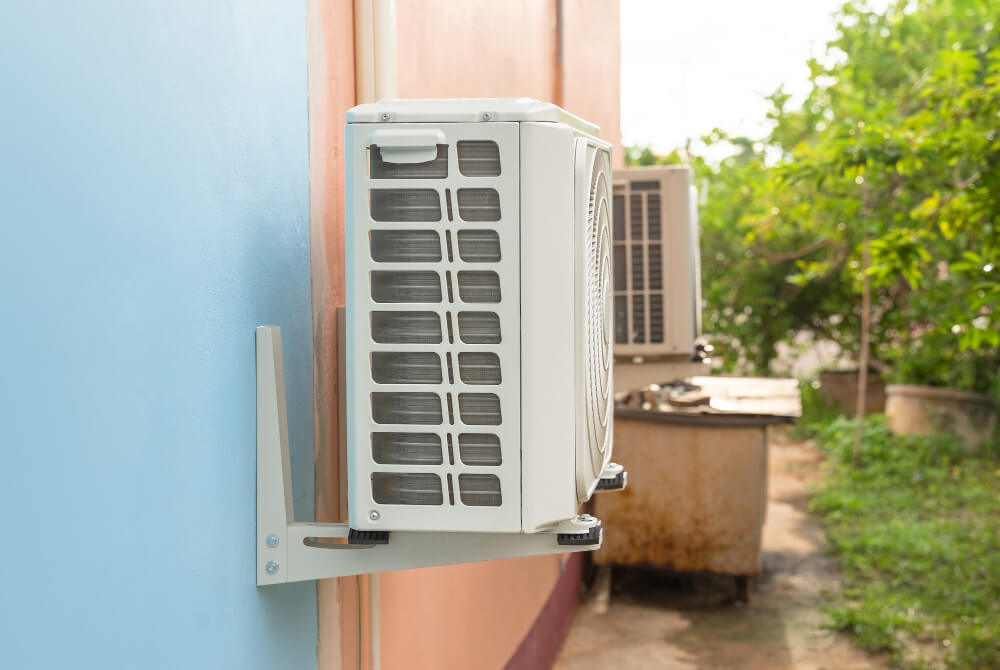If you’ve been looking for an HVAC system, you’ve probably run across the term “SEER.” What does SEER mean in HVAC systems? Basically, SEER stands for Seasonal Energy Efficiency Ratio. An HVAC unit’s SEER rating helps you determine how effectively the unit can cool your home.
You can learn more about SEER ratings and cooling output for HVAC systems with SM Mechanical Services. Get an answer to the question: what does an HVAC installer do and find out how the SEER rating comes into play in West Hartford, CT, by calling us at (860) 296-5100.
How HVAC Companies Use SEER Ratings
In general, you look at the SEER rating to determine the energy efficiency of an AC unit. However, this explanation does not go into how the SEER rating works. Essentially, the SEER rating works as a ratio that helps you determine how many watt-hours (Wh) of energy an HVAC system uses on a yearly basis.
The higher the SEER rating, the less energy your HVAC system uses. Therefore, many property owners look for AC units that have a high SEER rating. The state of Connecticut requires all HVAC systems to have a minimum SEER rating of 13.
The Energy Star standard for SEER ratings is currently 15, which is above the state minimum for Connecticut. Some of the most energy-efficient AC units have a SEER rating of 25.
Why Select an HVAC System With a Higher SEER Rating
You can purchase an HVAC system with a SEER rating as low as 13 in the state of Connecticut, or you can go above and beyond and find a unit with a 25 SEER rating. Often, systems with a higher SEER rating cost more, so many property owners wonder if they’re worth the increase in price.
You can save around 7-10% on your energy costs with each “point” higher you go with a SEER rating. This change means you can significantly lower your energy expenses by purchasing an HVAC system with a higher SEER score.
What does SEER mean in HVAC systems? It refers to energy usage, and paying attention to these ratings can help you save money in the long run.
Calculations Involving Your SEER Rating
How can you use your SEER rating to assess your yearly energy usage? To perform this calculation, you need a few other pieces of information, including:
- Your HVAC system’s BTU rating
- The number of hours your AC unit runs every day
- The number of days per year you use your AC system
Once you have this information, you can use it along with your SEER rating to determine your annual estimated energy use. However, you must first determine your total BTUs per year. You can find this number with the following equation:
BTU/h x Cooling hours per day x Cooling days per year = Total BTUs per year
We can plug some numbers into this equation as an example. Let’s say you have a system with 5,000 BTUs per hour, you cool your home for 10 hours every day, and you cool your home for 100 days a year. This information gives us:
5,000 x 10 x 100 = 5,000,000 BTUs per year
After you ascertain your BTUs per year, you can begin working with your SEER rating to estimate your annual energy usage, using this equation:
BTUs per year / SEER rating = estimated yearly energy usage
We can use our previous calculation to perform an example calculation, using an HVAC system with a SEER rating of 15:
5,000,000 / 15 = 333,333 Wh per year
You can use this information to determine the average energy usage for your property throughout the year.
Estimating Energy Costs With Your SEER Rating
You can also use your SEER rating to come up with an estimated amount of energy usage for your HVAC system. In order to calculate this rate, you can use this equation:
BTU/h / SEER rating
We can use the same examples as above to plug numbers into this equation, giving us:
5,000 / 15 = 333 Watts (or 0.3 kilowatts)
The above equation relates directly to energy usage tied to cooling output. You can translate this to your average cost by finding your energy rate. Generally, you can find the energy rate on the bill you receive from the utility company. Companies provide this rate in kilowatts per hour (kWh). Use this equation to calculate your estimated cost:
Kilowatts x kWh = hourly rate for energy use
Let’s say that your kWh rate is $0.10. We can use this information in the above equation to come up with:
0.3 kW x $0.10 kWh = $0.03 per hour
You can then multiply your hourly rate by the amount of time you run your HVAC system to estimate your total costs. For example, running your HVAC system for 10 hours per day at $0.03 per hour would cost 30 cents per day or $30 for 100 days.
Factors That Impact Your SEER Rating
The SEER rating reflects the maximum possible efficiency of your HVAC system. Most cooling units do not always function at their peak efficiency. Several factors can reduce the effectiveness of your cooling system, including:
- The temperature outside
- The settings of your thermostat
- Exposure to the sun
Your HVAC system may also function less efficiently if it needs maintenance. Regular check-ups can ensure your cooling unit remains in good condition and that your energy costs remain low. You can set up a maintenance appointment before the summer months to ensure your system operates correctly.
Keep in mind that units with a higher SEER are usually more expensive. However, they may not fit your needs. You can speak with an HVAC professional to review your energy requirements before purchasing a new cooling system.
Learn More About HVAC Systems and SEER Ratings
What does SEER mean in HVAC discussions? The SEER rating helps you determine the effectiveness of your HVAC system. You can learn more about energy calculations with an HVAC company in West Hartford, CT. Discuss SEER ratings with our team at SM Mechanical Services by calling (860) 296-5100.

